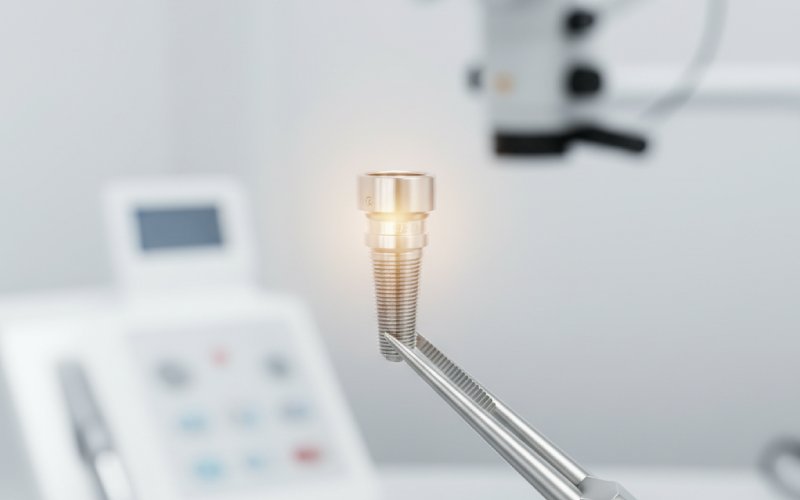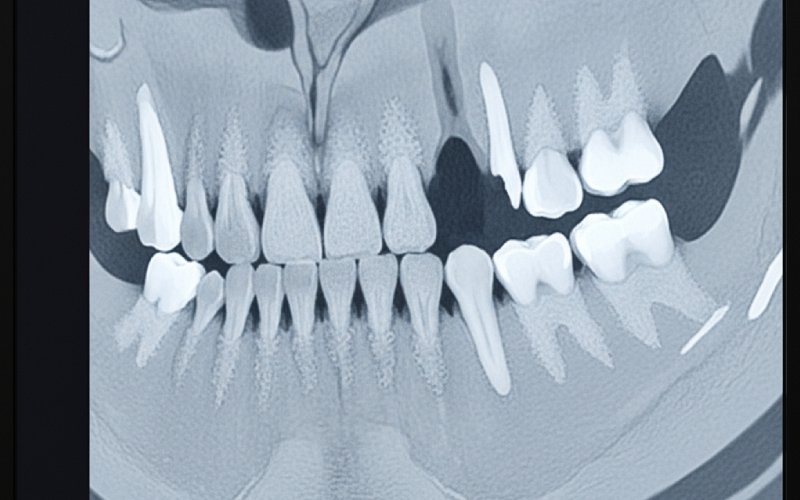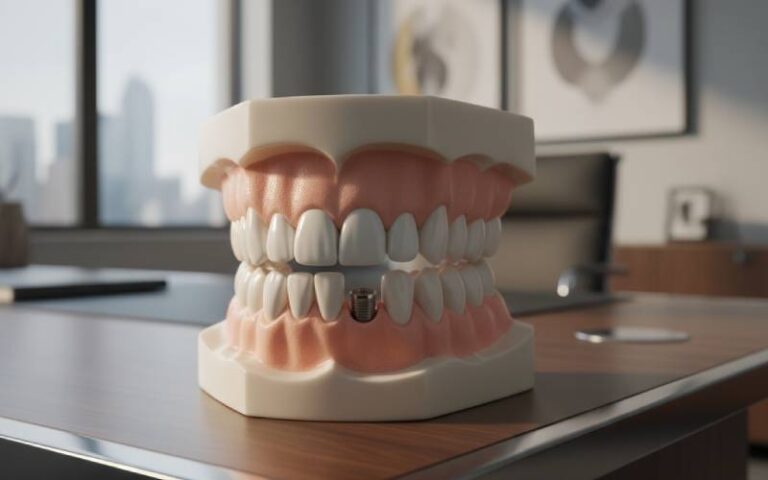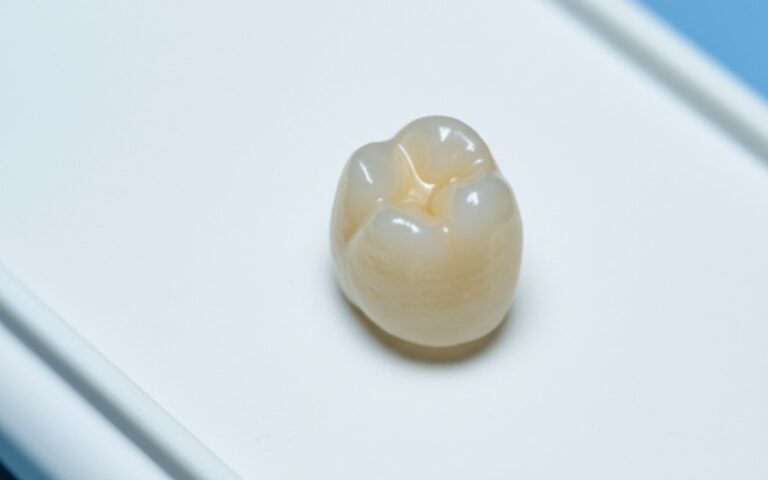
Is It Too Late to Get a Dental Implant? Things to Think About
Did you lose a tooth and wait a long time to fix it? You might be scared that you have waited too long for a dental implant. You might think your chance is gone for good. This article will explain why that is almost never true. Keep reading to find out about the good news in today’s dentistry. You can learn how you can still get a strong fix that lasts a long time for your missing teeth. It doesn’t matter how long it has been. We will look at the main things you need to think about.
Table of Contents
What Is a Dental Implant and Why Is Good Timing Important?
A dental implant is the top way to replace missing teeth. You can think of it as a man-made tooth root. It is a small, strong post. It is made of a metal called titanium. This implant post is put into your jawbone. It goes right where your old tooth was. After it heals, a new crown is put on top. This crown is made just for you. What you get in the end looks and feels exactly like a real tooth.
When you get an implant is a very important thing to think about after losing a tooth. Your jawbone needs something to do. The root of your tooth keeps the bone busy and working. This keeps it strong and healthy. When you lose a tooth, that work stops. Your body starts to think the bone is not needed there anymore. This is why a lot of dentists say to get a dental implant as soon as possible after tooth loss.
Is It Really Ever Too Late to Get Dental Implants?
Here is the easy answer. The good news is that it’s almost never too late to get a dental implant. It is easier to place a dental implant right after a tooth is gone. But, today’s dentistry has great ways to help people who have waited a long time. Your age is not usually a problem. How healthy you are in general is more important. The shape of your jaw is also more important.
So, if you are asking if it is too late to get dental implants, the answer is very likely no. Waiting can make things harder, it’s true. Your bone may have gotten smaller. Or, your gum may not be in good health. But now, a good dentist has the right tools and ways of doing things to fix these issues. For most people, it’s never too late to get your smile back with a dental implant. Implants offer a fix that lasts and you can count on.
What Happens to Your Jawbone After a Tooth is Taken Out?
When a tooth is removed, something called resorption starts to happen. This is a fancy word for a simple idea. Without this stimulation from the tooth root, the jawbone starts to shrink and get weaker. The bone loses how wide and tall it is. It also loses its density. This bone loss happens the quickest in the first year after a tooth extraction. But it keeps going for years.
This bone loss can change how your face looks. It might make you look older. It can also make the nearby teeth get loose or move into the wrong spot. The bone can get so weak that it can no longer hold a new dental implant without some help. This is the main reason people worry it might be too late to get dental implants.
Can You Get a Dental Implant a Long Time After Losing a Tooth?
Yes, you can for sure. Patients can still get a dental implant even years after they have lost your tooth or teeth. Lots of people have done it without problems. The hardest part is fixing the changes that have happened in your mouth since you lost your tooth. Your dentist will need to look at how much bone you have left. They will also check the health of your gum tissue.
Because of new and better tools in dentistry, waiting a long time does not stop you from getting implants. Your path to a new dental implant might take an extra step. This is compared to someone who did it sooner. But how it looks in the end can be just as strong and nice. It is possible to get your full smile back years after tooth loss.
How Does Bone Loss Change How a Dental Implant is Placed?
A dental implant needs a solid base. Think about building a house. You would not build it on soft, weak ground. A dental implant is just like that. It needs to be held tightly in place in a strong jawbone. Bone loss takes away this solid base. If too much bone is lost, there is not enough bone to support the implant.
For a good dental implant placement, there must be enough bone. The bone must be thick enough to hold the dental implant tight while it heals. If your bone density is not high enough, the implant can be placed, but it might not work out. Your dentist will use special X-rays. These will measure the density and amount of your bone. This shows if it can support an implant.

What If I Have Gum Disease? Can I Still Get a Dental Implant?
You cannot get a dental implant if you have gum disease that is happening now. Healthy gums are very important for the implant success for a long time. Gum disease, which is also called periodontal disease, is a sickness in your gum tissue. It can damage the gum and bone that keep your teeth in place. Putting an implant in a spot with germs would be like planting a tree in bad soil.
The first thing to do is to treat the gum disease. Your dentist will work with you to make your mouth healthy again. This might include deep cleanings or other care. With advanced gum disease, a lot of gum tissue can be gone. If this happens, you might need a gum graft. This helps build your gum line back up before the dental implant surgery.
What If My Other Teeth Moved Because of the Empty Space?
When you lose a tooth, an empty spot is there. Over time, the teeth next to the spot can start to lean or move into that empty space. The tooth above or below the empty spot can also move. This moving around makes a new problem: misalignment, or teeth not being in a straight line.
This change in how your teeth fit together can make it harder to place the dental implant. There might not be enough room to put the new dental implant and crown in the right way. Sometimes, your dentist might suggest orthodontic treatment. This is something like braces. It helps move the teeth back into their right spots. This makes the right amount of space for your new tooth to fit perfectly. Tooth loss can change more than just one spot in your mouth.
How Does New Dentistry Help With These Problems?
Today’s dentistry has very smart ways to fix these problems. For bone loss, the way it is fixed most of the time is with bone grafting. This is a thing the dentist does where they add new bone to your jaw. They might use a special material that acts like bone. This helps rebuild the bone structure. It makes it strong enough for a dental implant.
After bone grafting, you might need to wait a few months. This lets the new bone join with your jaw. Once it is all healed, your dentist can place implants knowing they will be secure. There are also other newer, better ways. For instance, a “sinus lift” adds bone to the top part of your jaw. Procedures like bone grafting have made getting implants a real choice for almost any person.
Who Is the Best Person for a Dental Implant?
While it is possible for most people, it is good to know what makes the best person for a dental implant. If you can get a dental implant is based on a few main things. Here’s what you need to have the best chance for your tooth replacement to work well.
| What They Look At | What is Best | Why it Matters |
|---|---|---|
| Oral Health | A clean mouth and no gum disease now | A clean mouth stops germs from getting around the implant. |
| Bone Quality | Having enough thick, strong bone | The implant needs a solid base to hold onto. |
| Gum Health | Gums that are healthy | Healthy gums close up the area and keep the bone safe. |
| Overall Health | Being healthy overall | This helps you heal after the work is done. |
| Lifestyle | You do not smoke | Smoking makes healing slow. It also makes it more likely the implant will fail. |
Even if you are not a perfect match on this list, a dental implant is probably still a choice for you. Your dentist will make a special treatment plan to get you ready.

What Is the Next Step? Your Meeting with an Implant Dentist
If you are thinking about a dental implant, the next thing to do is easy. Set up a consultation with an implant dentist. This is a meeting where you can ask all your questions. You can also get to hear what a professional thinks. You don’t have to agree to anything. It is a time for you to explore your options.
During the consultation, the dentist will look at your mouth. They will take X-rays and look at your health records. They will check your bone health and the shape your gum is in. After looking at all of this, they will tell you if you are a good person for a dental implant. They will then make a special treatment plan just for you. This plan will show you all the steps needed to give you a new tooth that will last a long time.
Key Points to Remember
- It is almost never too late: Because of today’s dentistry, you can probably get a dental implant even if your tooth has been gone for years.
- Bone loss is the biggest hurdle: Your jawbone gets smaller after you lose a tooth, but this can be fixed.
- There are ways to fix it: Things like bone grafting can build your jawbone back up. This makes it strong enough for a dental implant.
- Your health is more important than your age: How healthy your mouth and body are is more important than your age.
- A meeting with a dentist is the best next step: Talk to a dentist who works with implants. They can give you a clear plan that is right for you.




